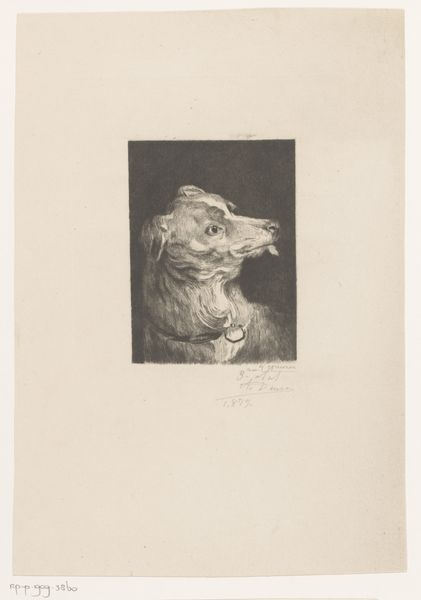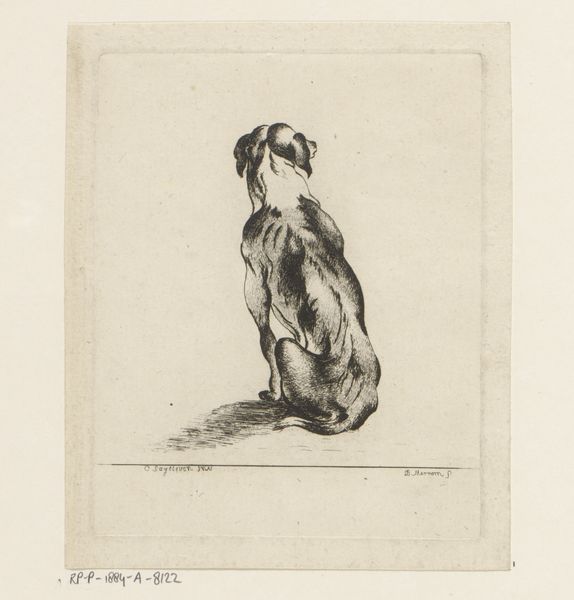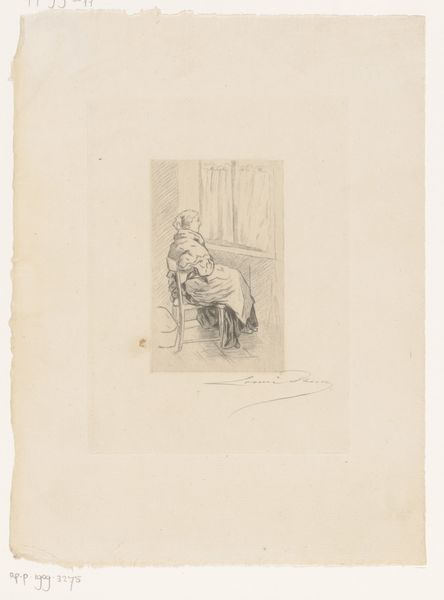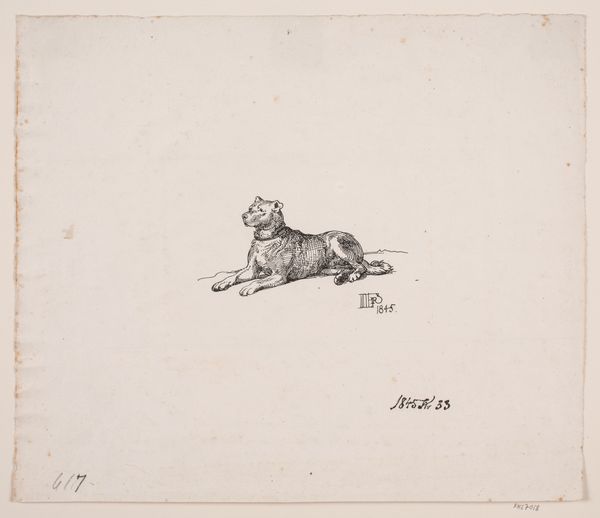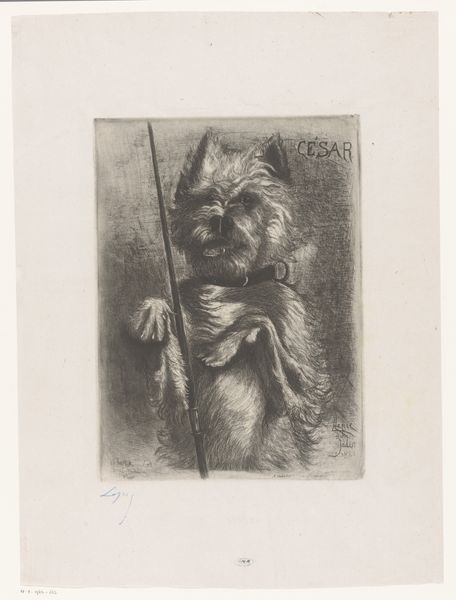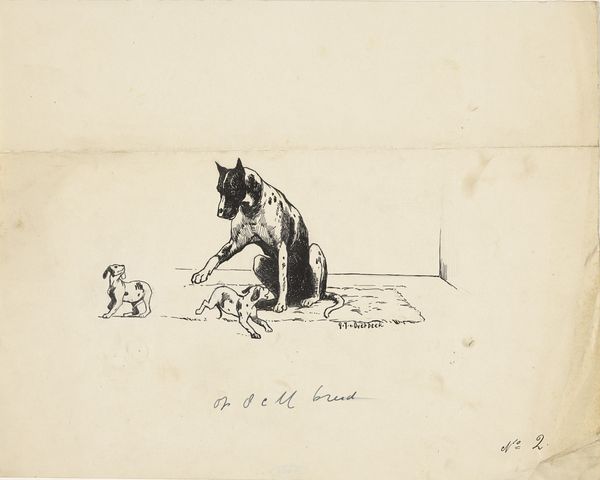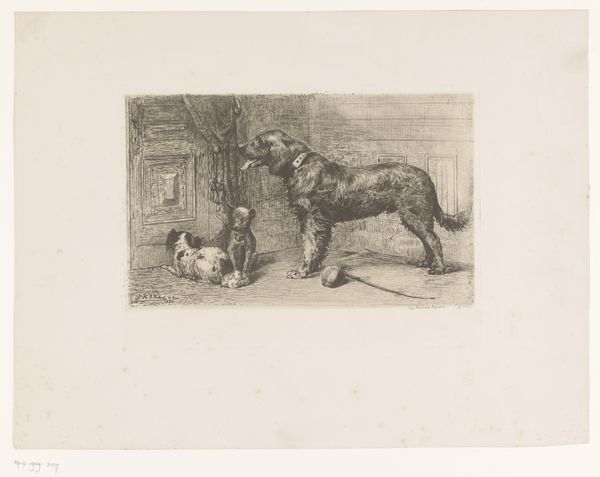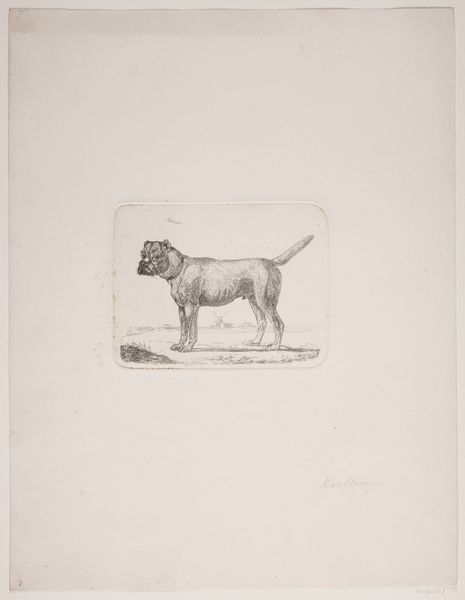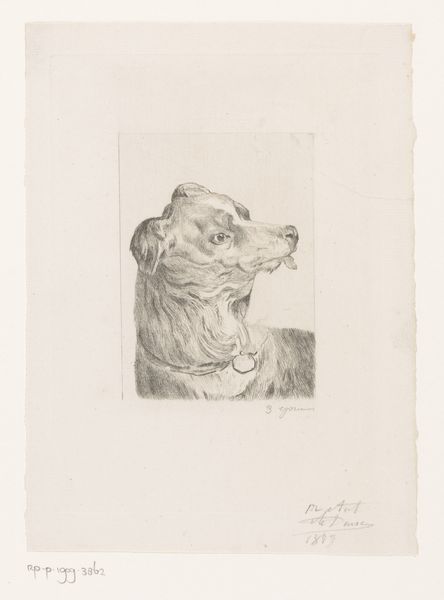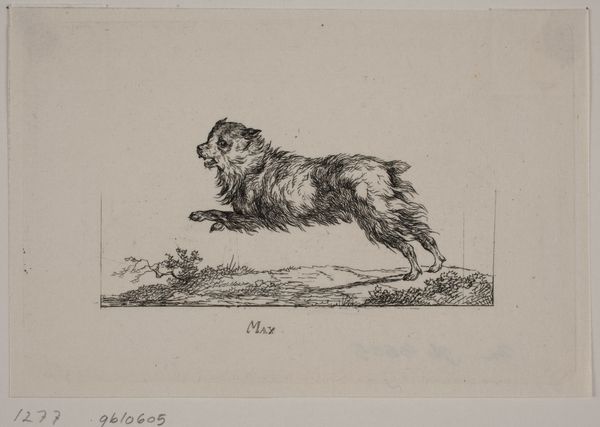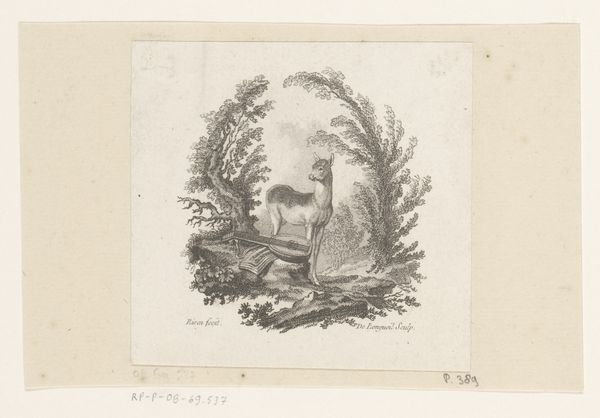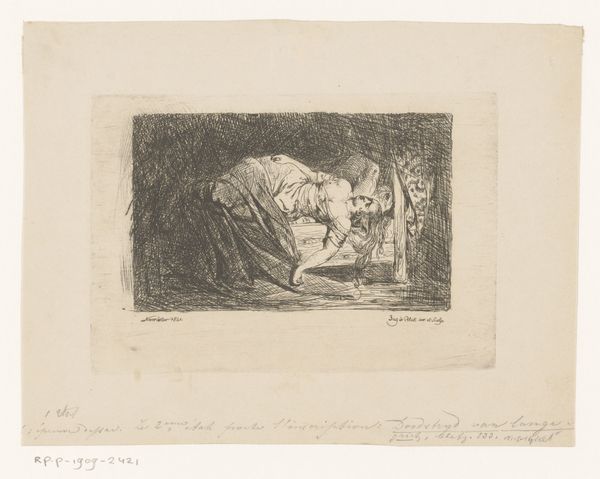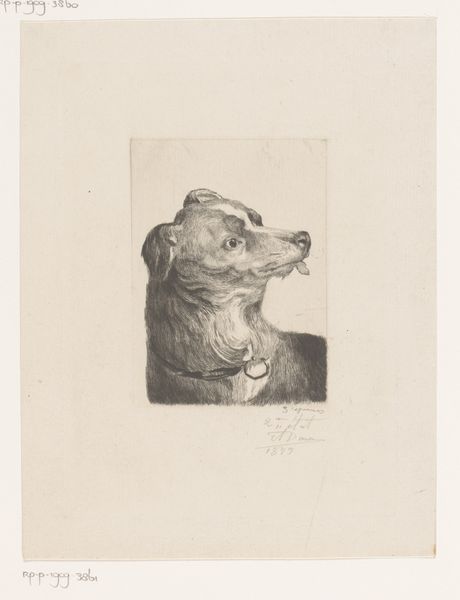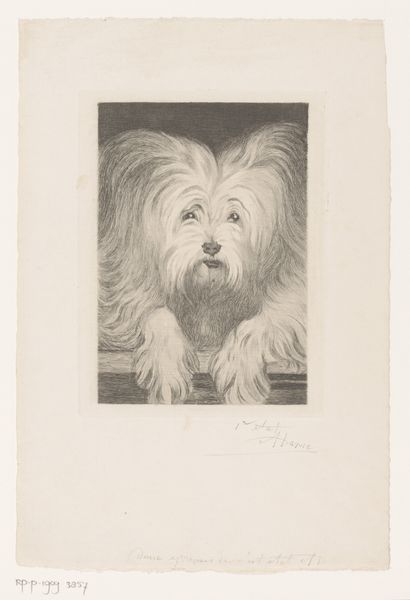
print, etching
#
portrait
# print
#
etching
#
figuration
#
realism
Dimensions: height 115 mm, width 160 mm
Copyright: Rijks Museum: Open Domain
Editor: Here we have "Hond," or "Dog," by David Goeritz, made sometime between 1850 and 1899. It’s an etching, giving it a slightly rough and ready feel. The dog himself looks a bit nervous, or maybe just alert. What do you see in this piece? Curator: I see a negotiation between the artisanal and the industrial. Etching, as a printmaking process, inherently democratizes image production. A single plate allows for multiple, identical images, thus entering the realm of mass production. However, the *hand* remains visible, doesn't it? The unevenness of the lines, the very fact that each print might vary slightly, keeps it tied to craft. Editor: So, the medium itself is telling a story? Curator: Absolutely! Consider the material components – the copper plate, the etching needle, the acid, the paper, the ink. Each one sourced, manufactured, and deployed by human hands in a very deliberate process. The realism evident in the dog’s portrait suggests a desire to capture a tangible, perhaps even commercially viable, likeness of the animal. What sort of labor would be required to produce all the tools needed to generate this image? What kind of person might purchase an image like this and why? Editor: That's fascinating; I never considered all the labor and industry baked into the image itself. So it’s not just a portrait, but also a record of the means of its creation? Curator: Precisely. And that opens a door to understand not only the artistic intention, but also the social and economic circumstances surrounding its making. Thinking of production like that really deepens our engagement, don't you think? Editor: Definitely. I'll never look at a print the same way again! Thanks for the insights.
Comments
No comments
Be the first to comment and join the conversation on the ultimate creative platform.
